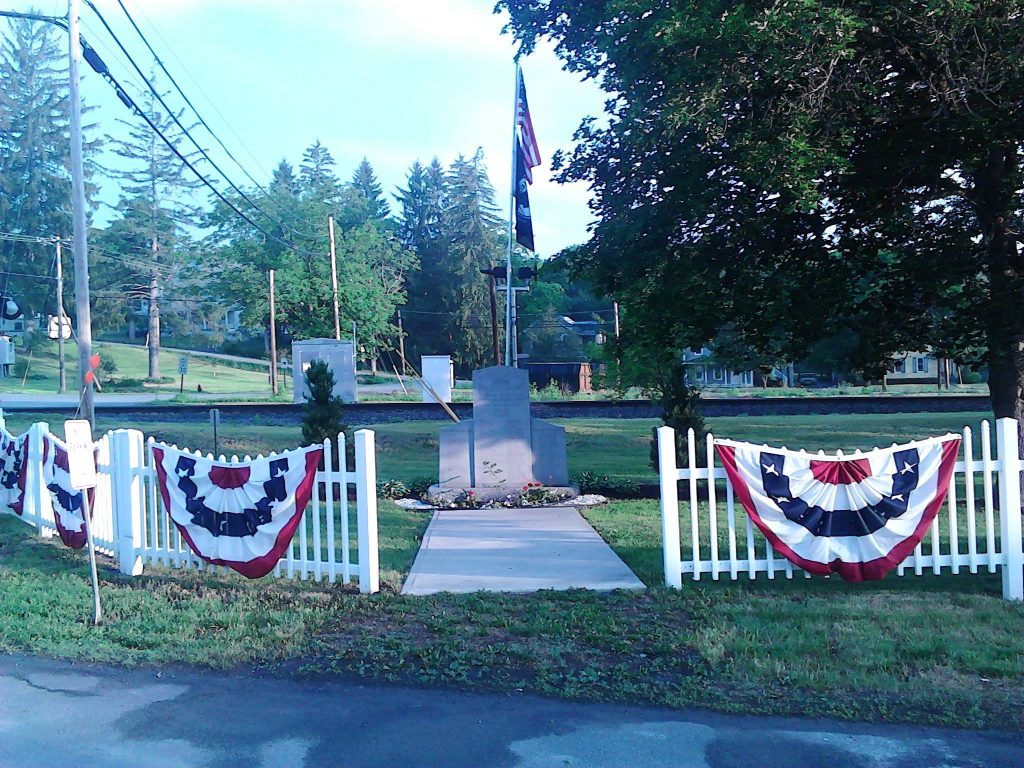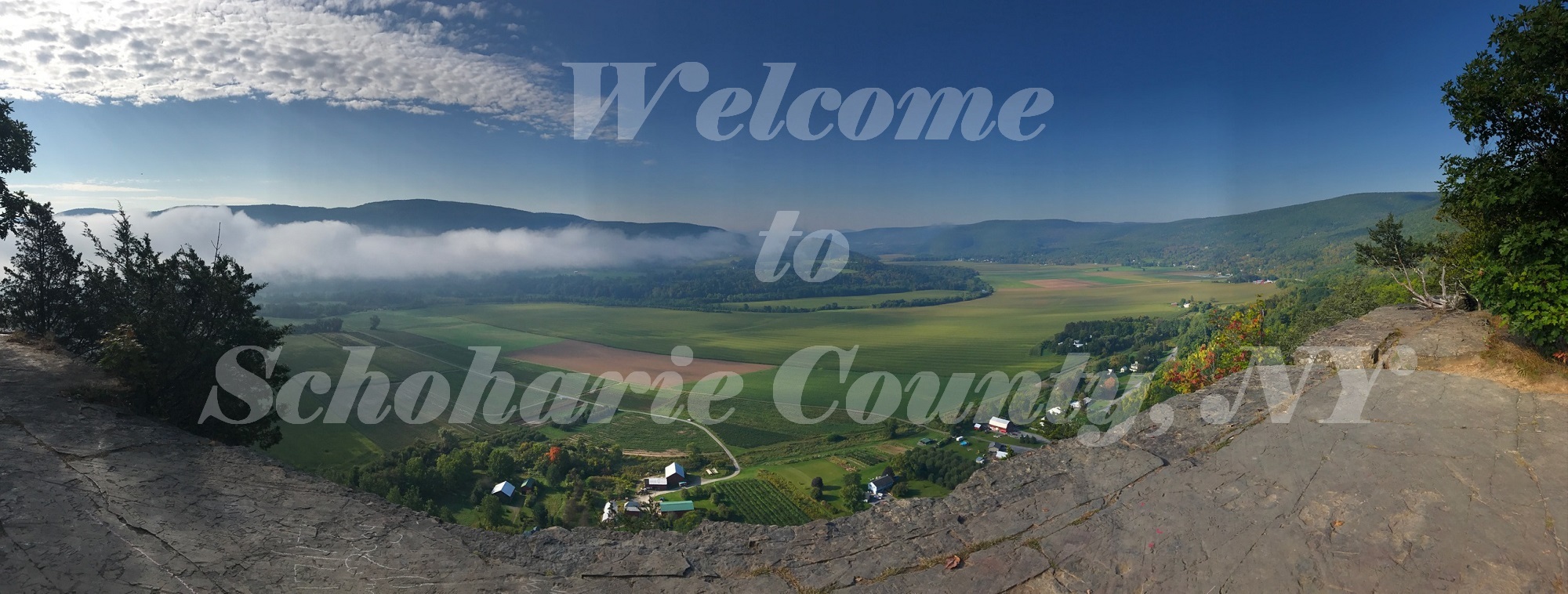The Central Bridge Civic Association is a not for profit organization that meets once a month and look forward to new member’s and new ideas.

CONTACT INFO:
Call (518) 868-2837
Email Us
A Brief History of Central Bridge
A group of Palatines led by John Peter Kneiskern (Kniskern) came to the area near the intersection of Route 7 and Junction Road, in 1716 or 1717, from the camps on the Hudson. It was named Kneiskern’s Dorf (German name for village). Kneiskern built a small gristmill on the Cobleskill Creek and the settlement prospered. Since the British reneged on their promise to give the Palatines land, Kneiskern negotiated with the Indians to purchase 300 acres costing seven pounds in Indian goods. He took the agreement to the Governor, and in 1729, the land patent was granted to the Dorf. By 1753, the land was divided into individual lots, and granted to the members of the community.
During the Revolutionary War, most of the men served with the local militia, and were loyal to the colonists’ quest for freedom. In 1780 when Sir John Johnson, Joseph Brant and bands of Indians raided the valley, Kneiskern’s Dorf was fortunate to be at the northern part, and had some warning of what was coming. They hid their goods and fled to the woods, saving their lives, but every building along the Schoharie Creek was burned. They built a blockhouse where they stayed for the remainder of the war, since they had no other homes.
After the war, the families spread out west of the Schoharie Creek, south of the Cobleskill, and north toward Sloansville. They rebuilt their homes and barns, and en-joyed the fruits of the fertile soil, selling extra crops in Al-bany and Schenectady, both two-day wagon trips. They kept to themselves, mistrustful of strangers who might try to take their land. In 1823, the Oak Hill spur was built on the turnpike from Schoharie to Duanesburg, making a direct road from Albany to Cobleskill. The hamlet of Smithville (named for the proprietor of an early inn) evolved at Old Central Bridge. The name Central Bridge came from the fact that there were once three covered bridges crossing the Schoharie Creek, one in Esperance, one in Schoharie, and a “central” one in between. Eventually the hamlet had several mills, two stores, two taverns, post office, school, two service stations, dairy farms, chicken farm, machine shop, and many homes.
George Westinghouse, inventor of the air brake and threshing machine, was born on Westinghouse Lane. In 1869, at age 22, he invented a railroad braking system using compressed air. It was, in time, nearly universally adopted by railways. Modern trains use brakes in various forms based on this design. He went on to form the Westinghouse Electric Corp. The home was added to the National Register of Historic Places in 1986.
The Albany & Susquehanna Railroad passed through about one mile to the northwest, and “New” Central Bridge was born. By 1863, trains were running from Albany to Central Bridge, then to Oneonta and Many businesses start-ed in the new village, and by the early 1900’s there were mills, hardware stores, two livery stables, three hotels serving meals, three grocery and two general stores, hairdressers, a creamery, coal and lumber store, drug store, barber-shop, undertaker and furniture business, firehouse, hay barn, funeral home, school, shoemaker, foundry and blacksmith shop, millenary shop, telephone office, farm implement manufacturing shop, and several farms.
The first Schoharie Valley Railway train ran from Schoharie to the Schoharie Junction Depot (Junction Road) near Old Central Bridge in 1866, allowing farmers in the area to ship their crops. The last train made the trip in 1942. Later, rail branches ran to Cherry Valley, and Middleburgh, further opening up markets for goods, supplies, and passenger travel. By the 1940s, more businesses opened: a car dealership, motor rebuilding plant, creamery, appliance repair and sales, electricians, plumbers, building contractors, hardware and lumber store, bars and restaurants, gas stations, a farm implement sales and repair shop, variety store, funeral home, adult home, hair salons, dance studio, dairy, convenience store, and fuel oil company. Local children attended the Central Bridge school, which at one time had three classrooms and a gym.
The S. K. Campbell Co. was an early manufacturer of the threshing machine; A. L. Parsons was one of the largest Ford dealerships in the state, and employed up to 100 people; Northeast Motors (rebuilt motors) also employed a large number.
Another vital enterprise was the Central Bridge Water Company, which built a reservoir and laid pipes to provide water for the steam engines, businesses, and homes. The company was no longer prosperous after the introduction of the diesel engine, and it became the Central Bridge Water District. Recently a Sewer District was formed, eliminating problems with old septic tanks.
The D. W. Jenkins Hose Company link to Hist Rev Fall 1997 was organized in 1895 with a horse-drawn hose cart donated by Jenkins. It is often used in anniversary celebration parades. In the late 1930’s, a 1934 Ford truck from A. L. Parsons was refitted by employees and delivered to the fire department. The Ladies’ Auxiliary was formed in 1941, the first in the county.
The Wellington Lodge, International Order of Odd Fellows was started in 1895, the lodge built in 1922, and by 1945 had a membership of 142. The Daughters of Rebekah served as their women’s auxiliary. Minstrel shows, card parties, dances, and bingo were held at the hall (now an apartment building). The Schoharie Valley Grange (originally created for farm families to provide educational events and social gatherings; later served as advocate for farm issues) was very popular in the 1940’s and 1950’s. The Board of Trade, similar to a Chamber of Commerce, was very active. (It is now the Civic Association, maintains the ball field and village green, and plans activities for the community.)
Early churches were Bethany Lutheran (once in the old village) constructed in 1906; United Methodist Church built in 1899 (old church moved to be used as a hall); Re-formed Church, 1876 (now an apartment house); Catholic Church of St. John, 1889 (upper Enders Avenue, no longer standing); and more recently, the Church of Jesus Christ of Latter-Day Saints.
This “golden era” lasted through the 1940s, but with the arrival of super markets, larger stores and the proliferation of the automobile, the area slowly lost its steam. Our once thriving hamlet became mostly residential. Many of the beautiful Victorian homes remain; several of the businesses have been turned into apartment houses. The D. W. Jenkins home has recently been placed on the National Register of Historic Places. Central Bridge still boasts three active churches, a fire department, post office, feed mill, funeral home, water and sewer district and several small businesses, but it is mostly residential, and the train no longer stops.
Bibliography
Fiftieth Anniversary Wellington Lodge, No. 741 booklet. 1945.
Jones, Ken. “History of the Town of Esperance” Over the Bridge to Yesteryear. Central Bridge Eccentric Club. 1978
Roscoe, William. History of Schoharie County. Syracuse: D. Mason & Co. 1882.
